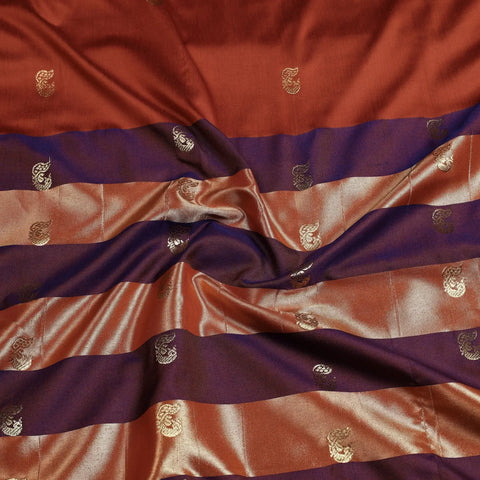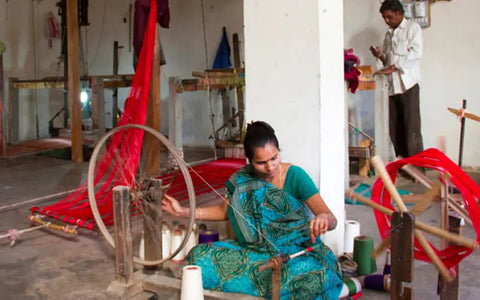'Land of Diverse Culture' is another name for India. It stands out from millions of other places because of its rich culture and tradition. Such rich culture of India is depicted by one of the most heritage states, Maharashtra. The richness of the state is clearly visible through the famous handicrafts of Maharashtra, making it stand out in the world’s unique dignity due to its rich cultural past that dates back to the era of rulers and queens.
Maharashtra has been home to great empires and dynasties right from the ancient period. Giving rise to the Maratha Empire, the Peshwas promoted the Maratha culture which included the handicrafts of Maharashtra, art and literature as well as cultural festivals. Even today, modern Maharashtra is the point of diverse cultures and languages, continuing to grow and evolve. Each area in Maharashtra is renowned for its artistic prowess, which indigenous and tribal women mostly create. Their substantial contribution has contributed continued preserving the state's rich heritage.
Different Crafts of Maharashtra
Starting from the Marathi Nath to Pathani Maharashtra Saree, the Maharashtra art and craft have added to the rich culture and heritage. Let’s see how.
Paithani Saree
Paithani has a long history and is well renowned for its magnificent weaving, all of which is done by hand. This saree is woven using a mix of silk and metal-based threads, generally a combination of silver and gold, and it uses a brocade or tapestry method. This saree is typically seen in striking and sparkling colour combinations to create enticing designs. These designs, which frequently take their cues from nature like the peacock, lotus, or paisley, add a sense of sophistication and riches to the saree.
In the past, it was worn by ladies from opulent and high-class households as a symbol of their status and heritage. This saree still oozes the same aesthetic and sensation while highlighting centuries-old wealth. The most amazing thing is that this saree has been recognized for its resilience and significance by being added to UNESCO's list of Intangible Cultural Heritage of Humanity.

Warli Art
Warli, the tribal art is quite known in the country after its simple and modest motifs. This tribal art was first found in the Warli district of Maharashtra, reflecting the rituals and customs of the Warli Tribe of Maharashtra. At that time, the art was created on the walls of village huts which dealt with life's daily struggle, nature, and spiritual beliefs of the people. Looking closely at the art depicted, it can be seen that the tribal people of that time were quite close to nature as if they had their personal connections to nature, its essence, and its various other aspects.
Earlier, the Warli Art is created with a white paste made from rice that is placed over a dark brown surface like mud or cow dung, which gives the art a greater aesthetic appeal. However, in today's time, artists use this art style to produce highly regarded paintings, fashion trends, ceramics, or textiles, making it possible for people from various cultures to recognize and appreciate it. In the end, it is an embodiment of Maharashtra art and craft mixed with tribal art that will keep elevating historical narratives and women empowerment while captivating the eye of art connoisseurs worldwide .

Mashru and Himroo
The ancient textile methods known as Mashru and Himroo are distinguished by their historical weaving styles. Mashru is a fabric that offers both elegance and comfort by fusing cotton and silk. Mashru fabric is made with silk warp and cotton weft, with silk on the outside to define luxury and cotton on the inside to make it cosy and softer. It is used to create elegant clothing like sarees, jackets, and turbans. The Mashru textiles often come in vivid colours, with the cotton having a contrasting inner layer and the silk wrap showcasing rich colours and motifs.
On the other hand, Himroo is a weaving method that combines metallic and silk threads into a single cloth to create distinctive patterns and textures. It thrived during the Mughal Empire's rule while being liked mostly by the wealthy and elite classes. The cloth has a hint of gold and silver, giving it a more opulent appearance. Himroo textiles are created using geometric forms, paisley patterns, and floral patterns that were influenced by Persian and Mughal art.

image credit :- youtube
Kolhapuri Chappal
One of the notable Maharashtra handicrafts, Kolhapuri Chappal has a distinctive style, workmanship, and substance. This chappal was initially designed and created in the Maharashtra town of Kolhapur with premium leather that was hand-cut, sewn, and decorated. Its richness and style assured their lifespan, defined craftsmanship, and exhibited the artistic Maharashtra handicraft.
In today’s time, traditional Kolhapuri chappals are available in earthy colours including black, brown, and tan. To keep up with the trend, it is now available in brilliant colours that also offer a lively and fashionable touch. In addition, because of its comfortable and unisex style, it may be worn by both men and women.

Narayan Peth Saree
The classic Maharashtrian sarees known as Narayan Peth Sarees are well-known across India. It is renowned for its fine craftsmanship, intricate motifs, and vibrant colors. It is woven with the Kadiyal technique using pure silk thread to give it a glistening, sumptuous look with various patterns. The designs include those drawn from nature, such as peacocks, flowers, and other organic shapes.

Nath - Marathi Nosepin
Nath holds a significant place in the life of Maharashtrian women showcasing their marital status and prosperity. This Maharashtra handicraft can be of varied sizes and shapes. This traditional nosepin can be found in large, round or even crescent shape which is to be worn with the traditional Maharashtrian attire, adding to the touch of elegance and charms of the Maharashtra ladies.
Made with gold and diamonds, it holds the sentimental values of the Maharashtrian society defining beauty, femininity, and tradition.

The legacy of the Maratha is alive amidst Maharashtra handicrafts as this state is home to some excellent skilled craftsmen. We at iTokri bring you authentic Indian handicrafts online directly from local artisans.
FAQs
- What craft is famous in Maharashtra?
Because of their most attractive feature, a border that contrasts with the colour of the whole saree, Narayan Peth sarees are the most famous handicrafts of Maharashtra.
- What is unique about a Paithani saree?
Cotton and silk are used to prepare a pain weave Paithani saree constituting the zari patterns. It has peacock motifs on the pallu and oblique square patterns on the borders.
- What is the time period of Warli Art?
One of the biggest tribes in Maharashtra is the Warli, and their renowned Warli Art dates back to the 10th century AD.
 Verified Purchase
Verified Purchase











































































































































































































Leave a comment (all fields required)